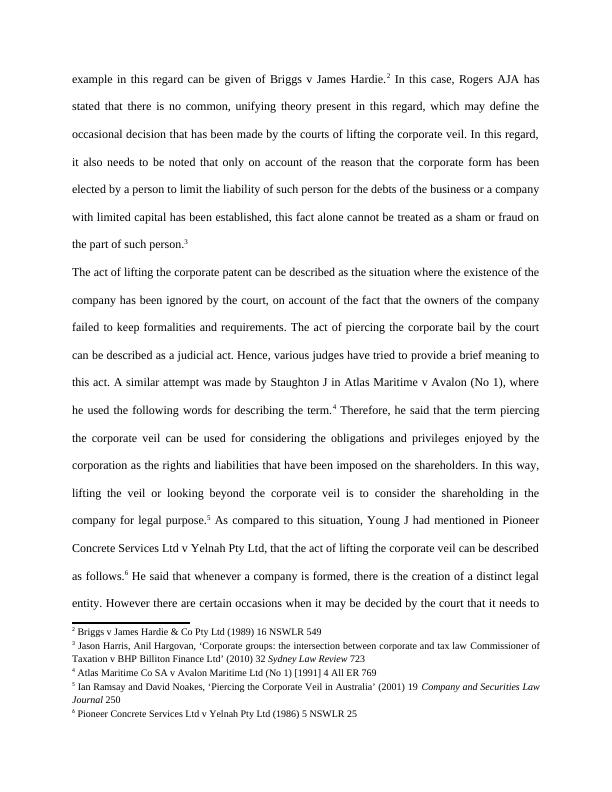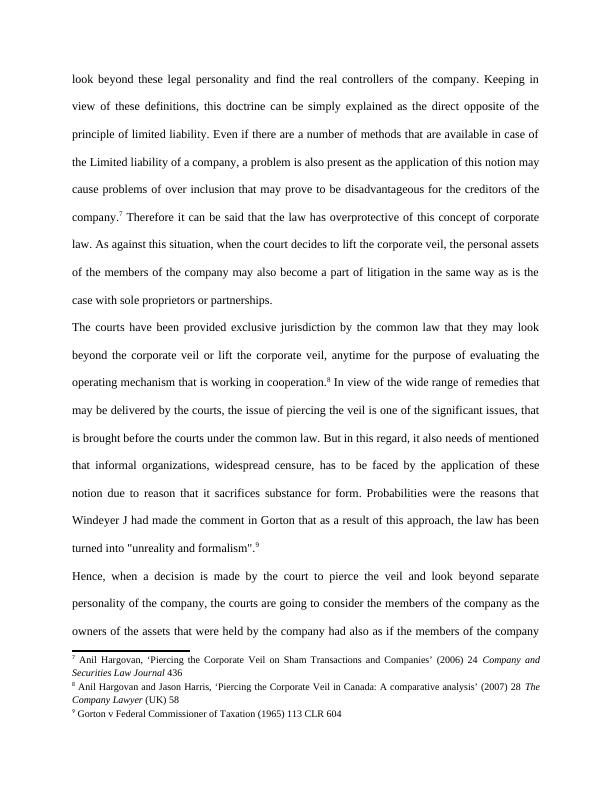Piercing the Corporate Veil in Australia: A Discussion on the Courts' Reluctance to Depart from the Separate Entity Principle
Research assignment on the duty of directors to act in the best interest of the company and the question of piercing the corporate veil.
9 Pages3139 Words91 Views
Added on 2023-06-04
About This Document
This article discusses the principle of separating the identity of corporations in Australia and the circumstances under which the courts have been willing to look beyond the separate existence of a corporation. It also explores the factors that the courts consider when deciding whether to lift the corporate veil, such as agency and fraud. The article concludes that lifting the corporate veil remains a highly controversial topic under corporate law.
Piercing the Corporate Veil in Australia: A Discussion on the Courts' Reluctance to Depart from the Separate Entity Principle
Research assignment on the duty of directors to act in the best interest of the company and the question of piercing the corporate veil.
Added on 2023-06-04
ShareRelated Documents
End of preview
Want to access all the pages? Upload your documents or become a member.
Directing mind and will of a corporation
|3
|735
|173
Enforcing Corporate Constitution and Lifting Corporate Veil
|8
|2301
|419
Directing Mind and Under the Common Law
|3
|648
|112
Directing Will and Corporate Veil Assignment
|5
|715
|224
Corporate Veil and Limited Liability in International Business Law
|13
|4988
|284
Discussion on Corporate Law
|14
|4121
|46



